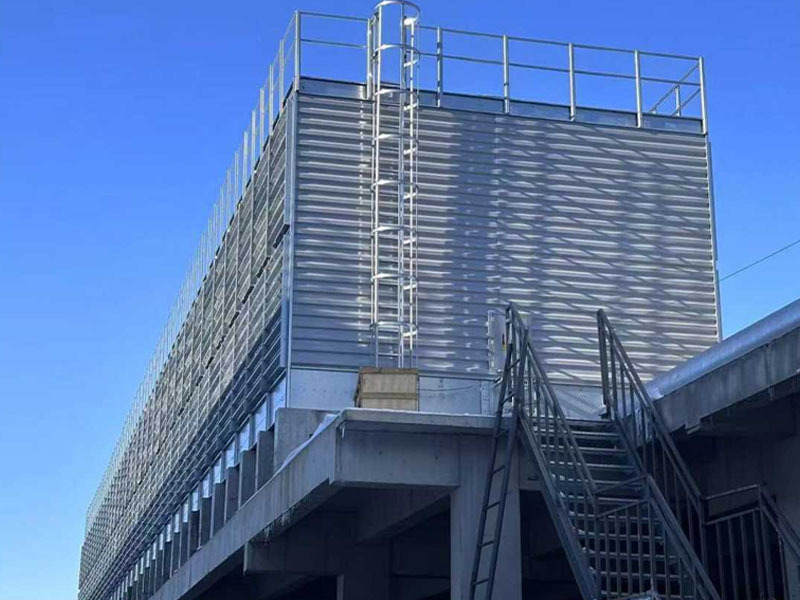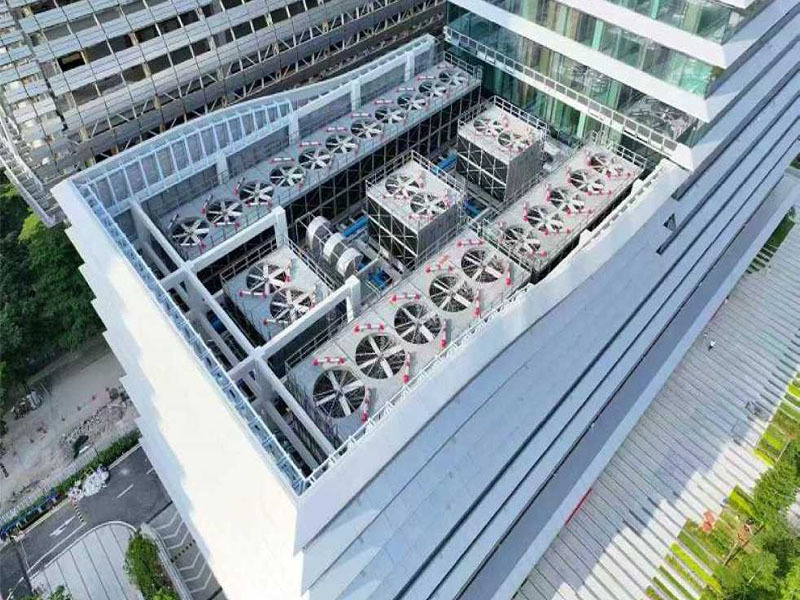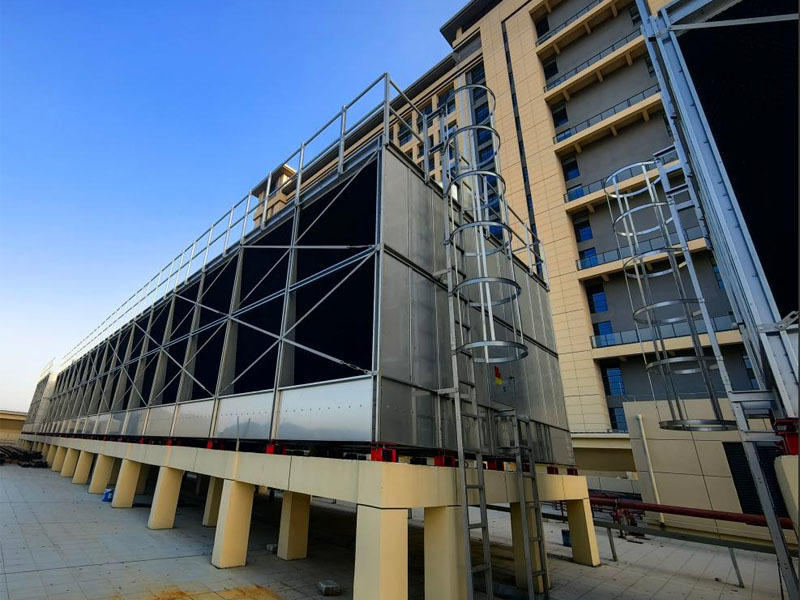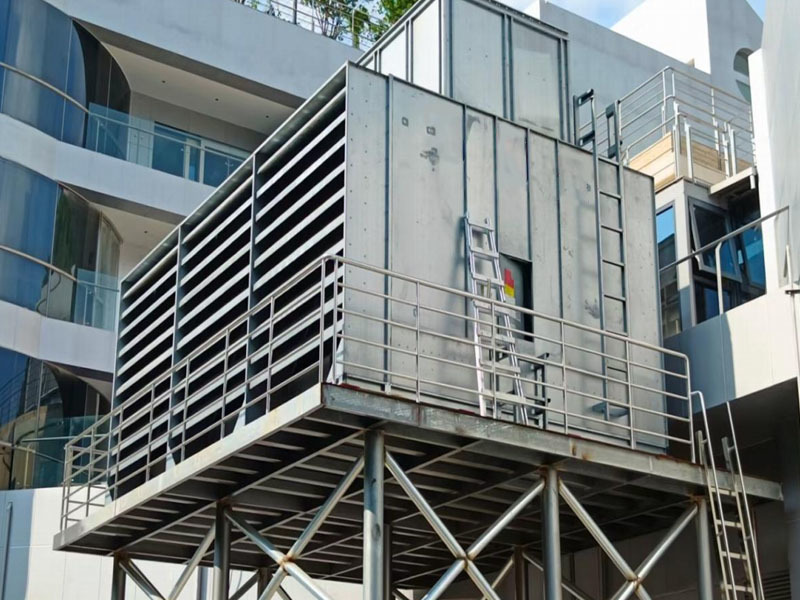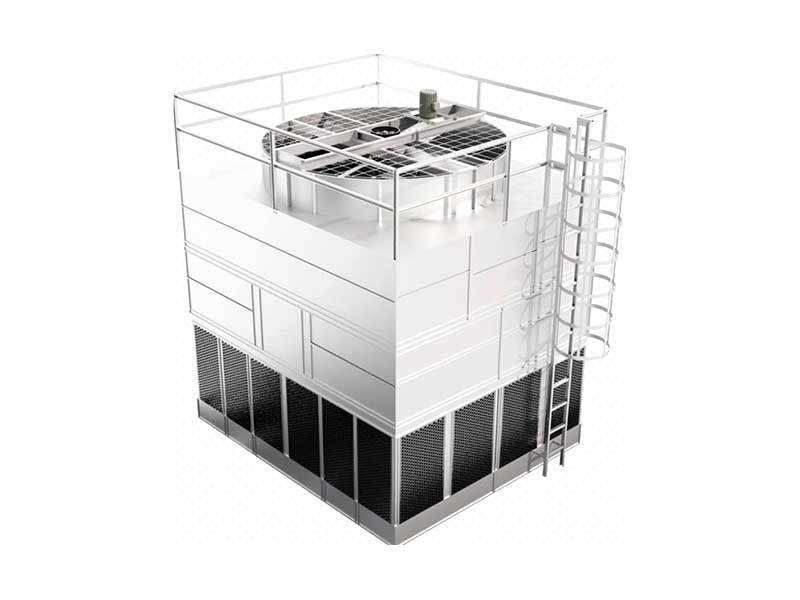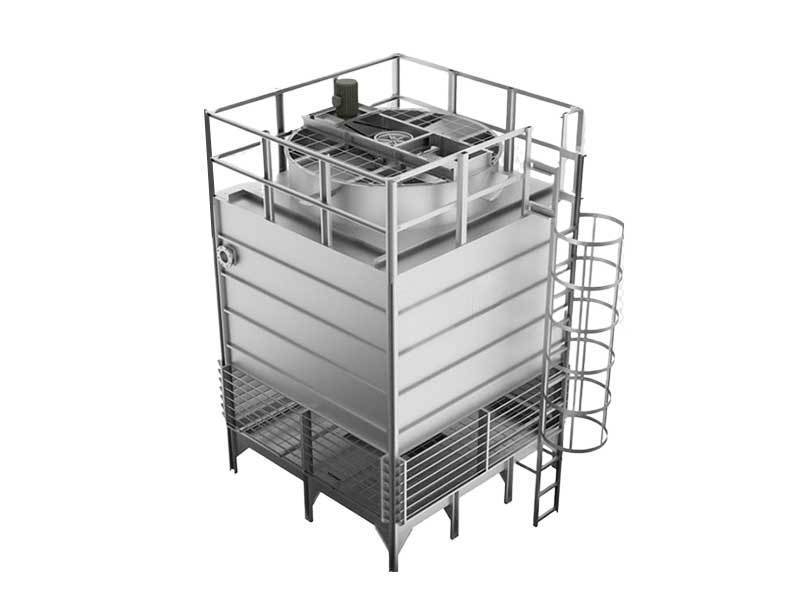Closed Counterflow Cooling Towers
Keywords:
Category:
- Product Description
-
### Closed-circuit Counterflow Cooling Tower
In the operation of modern industrial and commercial facilities, an efficient heat dissipation system is one of the key factors in ensuring stable equipment operation and extending service life. Among them, closed-circuit counterflow cooling towers, as an advanced heat exchange device, are widely used in various cooling applications due to their high efficiency, energy saving, and environmental protection characteristics. This article will detail the working principle, structural characteristics, application advantages, and maintenance of closed-circuit counterflow cooling towers, in order to provide readers with a comprehensive and in-depth understanding.
#### 1. Working Principle of Closed-circuit Counterflow Cooling Tower
The working principle of a closed-circuit counterflow cooling tower is based on the principle of heat exchange. Its core is to indirectly exchange heat between the medium to be cooled (usually water or other coolant) and the air, without allowing the medium to directly contact the external environment, thereby avoiding water pollution and evaporation loss. "Counterflow" refers to the cooling medium flowing upward in the tower, while the air flows downward through the packing layer. Heat exchange is achieved during the process of their counter-current flow.
Specifically, the cooling medium first enters the heat exchanger at the bottom of the tower (usually a coil or plate heat exchanger). Here, the heat released by the medium is transferred through the tube wall to the water film outside the tube. Then, the air is drawn in by the fan, passes through the specially designed packing layer, which increases the contact area between the air and the water film, promoting rapid heat transfer. The hot air carries away the heat during its upward movement, and is finally discharged through the top of the tower, while the cooled medium flows back to the system through the pipeline to continue the cooling task.
#### 2. Structural Characteristics of Closed-circuit Counterflow Cooling Tower
A closed-circuit counterflow cooling tower mainly consists of a tower body, heat exchanger, fan, packing, water collector, circulating water pump, and control system.
- **Tower body**: Usually made of corrosion-resistant materials, it has good sealing and weather resistance, protecting the internal components from external environmental influences.
- **Heat exchanger**: The core component of the cooling process, responsible for transferring system heat to the air.
- **Fan**: Provides power to drive air circulation in the tower, accelerating the heat exchange process.
- **Packing**: Increases the contact area between air and water film, improving heat exchange efficiency.
- **Water collector**: Located at the top of the tower, it effectively intercepts water droplets rising with the air, reducing water consumption.
- **Circulating water pump**: Drives the cooling medium to circulate between the system and the cooling tower.
- **Control system**: Monitors and regulates the cooling process to ensure stable equipment operation.
#### 3. Application Advantages of Closed-circuit Counterflow Cooling Tower
1. **Energy saving and environmental protection**: Because the medium does not directly contact the outside air, water evaporation and dispersion are reduced, reducing water resource consumption; at the same time, it avoids environmental problems caused by water pollution.
2. **High-efficiency cooling**: The counterflow design makes the heat exchange between air and medium more thorough, improving cooling efficiency.
3. **Easy maintenance**: The closed structure reduces the intrusion of external impurities, extends the service life of the equipment, and reduces maintenance costs.
4. **Strong adaptability**: It can be customized according to different environmental and cooling needs, and is widely used in various fields such as power, chemical industry, pharmaceuticals, and food processing.
5. **Low noise**: Using low-noise fans and sound insulation design reduces noise pollution during operation.
#### 4. Maintenance
To ensure the efficient and stable operation of the closed-circuit counterflow cooling tower, regular maintenance is crucial. This includes, but is not limited to:
- Regularly check the heat exchanger for blockage and clean up deposits.
- Check the fan blades for wear and tear and whether the bearings are well lubricated.
- Clean the packing layer to keep its surface clean to improve heat exchange efficiency.
- Check if the water collector is intact to prevent water droplets from overflowing.
- Monitor the circulating water quality and add corrosion inhibitors and scale inhibitors in a timely manner.
- Regularly calibrate the control system to ensure its accuracy.
In summary, closed-circuit counterflow cooling towers, with their unique advantages, are playing an increasingly important role in modern industrial cooling systems. Through scientific and reasonable maintenance, not only can their long-term efficient operation be ensured, but the service life of the equipment can also be effectively extended, creating greater economic and social benefits for enterprises.
Inquiry
Service Hotline:
+86-138 2574 5855
+86-189 0261 0628
E-mail:dykj1688@yeah.net
Address: Guangdong Province, Huizhou City, Boluo County, Longxi Town, Longyuan Avenue, Dongyan Technology Industrial Park
Follow us

Scan with your phone
Copyright © Guangdong Dongyan Cooling Equipment Co., Ltd. All rights reserved.
Power by:www.300.cn | SEO | Privacy Policy

